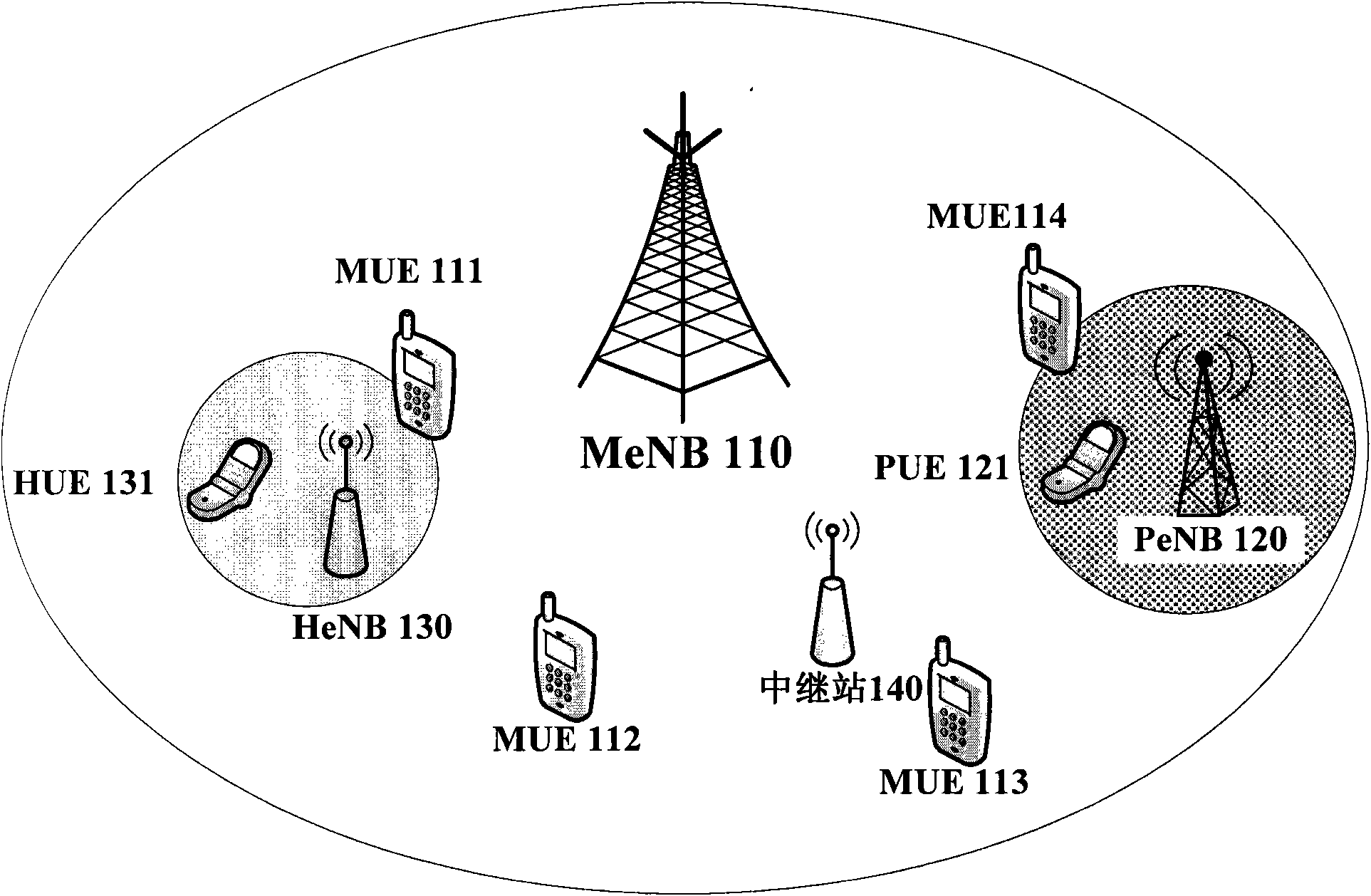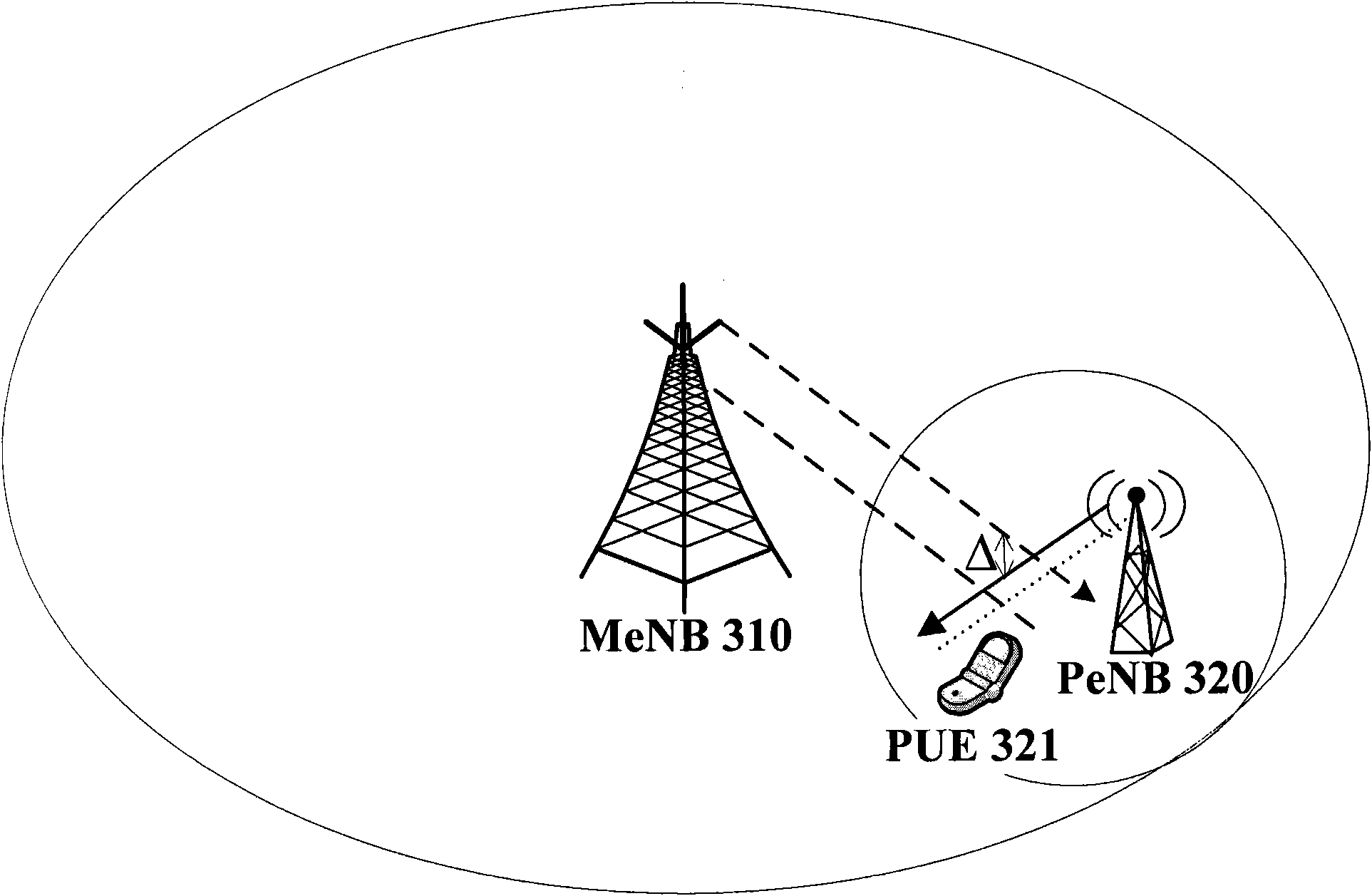Method for enhanced inter-cell interference cancellation (eICIC) in heterogeneous network, base station and user equipment
An enhanced technology for co-channel interference, applied in wireless communication, electrical components, connection management, etc., can solve the problem of incomplete and specific methods for enhanced co-channel interference cancellation or coordination, increased interference coordination complexity, and irregular cell shapes Rules and other issues
- Summary
- Abstract
- Description
- Claims
- Application Information
AI Technical Summary
Problems solved by technology
Method used
Image
Examples
no. 1 example
[0089] The first embodiment of the present invention is a method of eICIC in a Macro-Femto heterogeneous network. Figure 7 A schematic diagram showing an application scenario of the eICIC method according to the first embodiment of the present invention. Such as Figure 7 As shown, the entire heterogeneous network includes a macrocell base station MeNB 510, a femtocell base station HeNB 530, a macrocell user equipment MUE 511, a home user equipment HUE 531, and a HUE 532, wherein the MeNB 510 is the serving base station of the MUE 511, and the HeNB 530 is the The serving base stations of HUE 531 and HUE 532, MeNB 510 and HeNB 530 can perform background (Backhaul) communication.
[0090] Background communication involves the structure of the LTE access network. The structure of the LTE access network is now described. The LTE access network is only composed of eNBs, which provide the packet switching core network (MME / S-GW, that is, the gateway of the mobility management en...
no. 2 example
[0110] The second embodiment of the present invention is another eICIC method in a Macro-Femto heterogeneous network. In essence, this method is an application of the co-channel interference cancellation scheme based on power control or power setting in the first embodiment. Figure 15 A flowchart according to a second embodiment of the present invention is shown.
[0111] As can be seen in the figure, Figure 15 Steps S100 to S101 in the Figure 9 The corresponding steps in are exactly the same, so the description will start from step S102' here, and the detailed description of these two steps will not be repeated.
[0112] In step S102', the HeNB judges whether the distribution of the HUE 531 and the HUE 532 in the cell is both distributed in the center of the cell. If the distribution of HUE 531 and HUE 532 in the cell of HeNB 530 is such that both HUE 531 and HUE 532 are in the center of the cell, execute step S103'; if both HUE 531 and HUE 532 are not in the center of ...
no. 3 example
[0136] The third embodiment of the present invention is a method for eICIC in a Macro-Femto heterogeneous network. Figure 17 A schematic diagram showing an application scenario of the eICIC method according to the third embodiment of the present invention. Such as Figure 17 As shown, the entire heterogeneous network includes a macrocell base station MeNB 610, a femtocell base station HeNB 630, macrocell user equipment MUE 611, MUE 612, and a home network user equipment HUE 631, wherein MeNB 610 is the serving base station of MUE 611 and MUE 612 , the HeNB 630 is the serving base station of the HUE 631, and the MeNB 610 communicates with the HeNB 630 through a backhaul (Backhaul) interface.
[0137] Figure 18 A flow chart of a method for eICIC in a heterogeneous network according to the third embodiment of the present invention is shown. Such as Figure 17 As shown, the method starts at step S200. In this step, when the MUE 611 is in idle mode and enters the CSG cell of...
PUM
 Login to View More
Login to View More Abstract
Description
Claims
Application Information
 Login to View More
Login to View More - R&D
- Intellectual Property
- Life Sciences
- Materials
- Tech Scout
- Unparalleled Data Quality
- Higher Quality Content
- 60% Fewer Hallucinations
Browse by: Latest US Patents, China's latest patents, Technical Efficacy Thesaurus, Application Domain, Technology Topic, Popular Technical Reports.
© 2025 PatSnap. All rights reserved.Legal|Privacy policy|Modern Slavery Act Transparency Statement|Sitemap|About US| Contact US: help@patsnap.com



